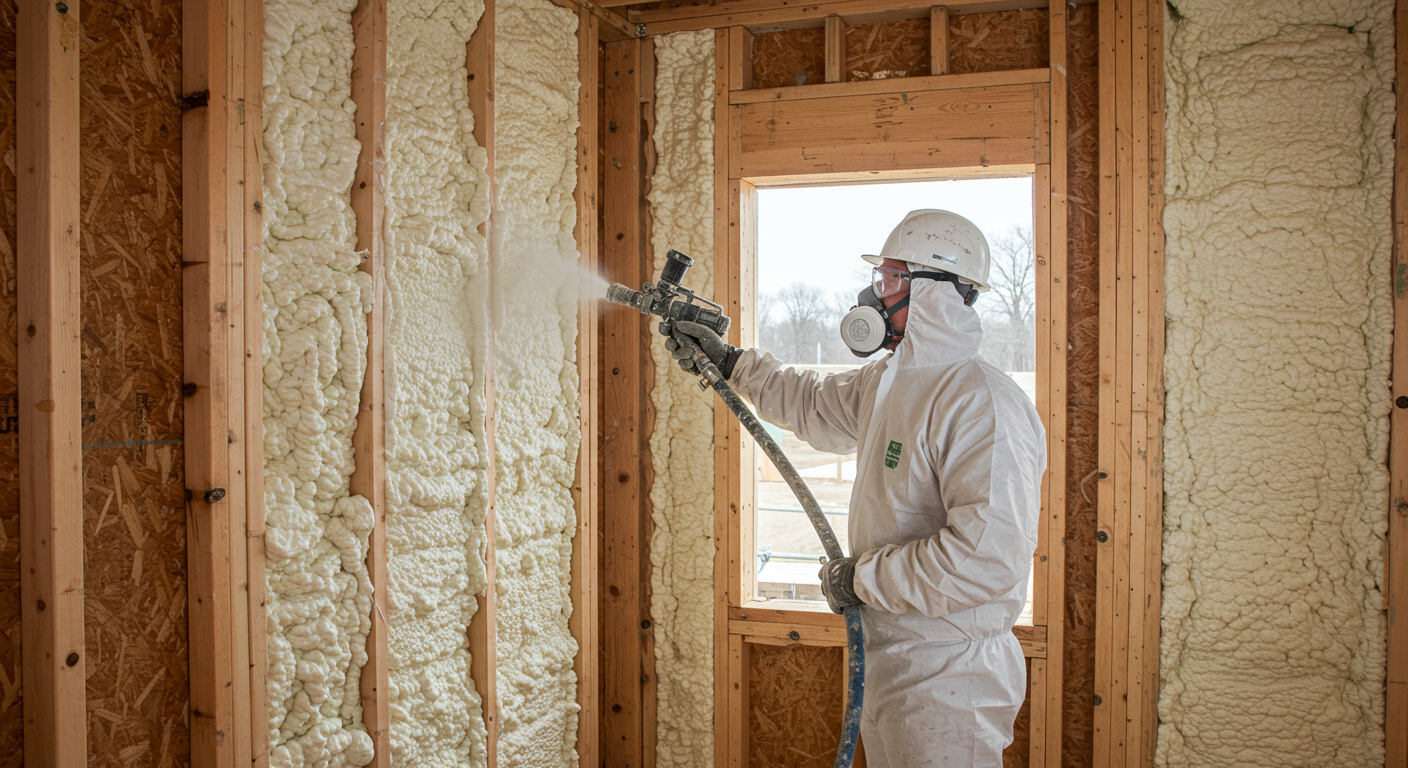
Spray foam insulation is a highly effective solution for energy efficiency and temperature regulation. However, it is not suitable for all applications. Using spray foam in inappropriate locations can lead to structural issues, health concerns, and safety hazards. This guide explores where spray foam should not be used, offering insights into its limitations and best alternatives.
Spray foam insulation is a polyurethane-based material that expands upon application to create an airtight seal. While it offers superior thermal resistance and moisture control, its application must be carefully considered to avoid potential drawbacks.
Spray foam insulation can interfere with electrical wiring and create fire hazards. When applied too close to electrical boxes, it can obstruct proper ventilation, leading to overheating. Electricians recommend leaving space around the wiring to ensure safety.
Alternative Solution: Fiberglass or mineral wool insulation allows better airflow around electrical components while providing adequate thermal protection.
Certain areas of a home or building experience extreme heat, which can degrade spray foam over time. For example, proximity to recessed lighting or high-temperature appliances can compromise the integrity of the insulation.
Alternative Solution: Use fire-resistant insulation materials such as rock wool or ceramic fiber in these areas.
Applying spray foam in enclosed spaces without proper ventilation can lead to the buildup of toxic fumes. The chemical off-gassing process requires adequate airflow for safe curing.
Alternative Solution: Opt for pre-cut rigid foam boards or blown-in cellulose insulation for better air circulation in confined areas.
Spray foam should not be applied over old or deteriorating insulation. Trapping moisture or debris under the new insulation can lead to mold growth and structural damage.
Alternative Solution: Remove old insulation and install a new material that suits the space, such as fiberglass batts or rigid foam boards.
Moisture can prevent spray foam from adhering properly and may lead to mold development. Applying spray foam in areas prone to leaks or high humidity can cause failure over time.
Alternative Solution: Address moisture issues first by sealing leaks and using vapor barriers before installing insulation.
Spray foam is not suitable for direct use inside HVAC ducts. The chemicals can release harmful fumes when exposed to airflow, and the material may deteriorate under constant temperature fluctuations.
Alternative Solution: Use fiberglass duct wrap or rigid foam insulation designed specifically for HVAC systems.
Applying spray foam directly under wooden floor joists without additional reinforcement can cause the wood to expand and contract, leading to structural instability.
Alternative Solution: Use spray foam in combination with rigid foam board insulation and adequate ventilation.
Spray foam should not be applied directly to roof shingles as it can trap heat, leading to premature deterioration of the roofing material.
Alternative Solution: Opt for radiant barriers, roof ventilation systems, or breathable insulation options for attic spaces.
Spray foam can alter the structural integrity of historic buildings, making future renovations challenging. The material can also trap moisture, which may lead to the deterioration of the original materials.
Alternative Solution: Use natural insulation materials such as cellulose, wool, or wood fiberboard to preserve the building’s historic value.
Unvented attic spaces require precise spray foam application to avoid trapping moisture and creating condensation issues.
Alternative Solution: Consider a hybrid insulation approach, combining spray foam with proper attic ventilation strategies.
Before applying spray foam, consider the following factors:
| Problem Area | Spray Foam Limitation | Recommended Alternative |
| Electrical Boxes | Blocks ventilation, fire risk | Fiberglass, mineral wool |
| High-heat areas | Degradation under extreme heat | Rock wool, ceramic fiber |
| Enclosed, unventilated spaces | Toxic off-gassing | Rigid foam, cellulose |
| Over old insulation | Traps moisture, mold risk | Remove and replace with a new |
| Damp areas | Poor adhesion, mold growth | Vapor barriers, fiberglass |
| HVAC systems | Releases harmful fumes | Fiberglass duct wrap |
| Underfloor joists | Structural instability | Rigid foam, ventilation |
| Roof shingles | Traps heat, shortens lifespan | Radiant barriers, ventilation |
| Historic buildings | Alters original structure | Natural fiber insulation |
| Unvented attic spaces | Condensation issues | Hybrid insulation, ventilation |
Understanding where not to use spray foam is essential for making informed insulation choices. While spray foam offers exceptional thermal benefits, improper application can lead to safety and structural issues. By considering alternative solutions, homeowners and builders can select the best insulation for their specific needs.
For professional insulation services and expert guidance on the best insulation solutions, Contact Red River Spray Foam Insulation. Get in touch today for a consultation and ensure your property is well-insulated and protected.
While it can be applied to bathroom walls, it is essential to ensure proper ventilation to prevent moisture buildup.
Yes, but only if the crawl space is dry and well-ventilated. Encapsulated crawl spaces work best with spray foam.
Removing spray foam is challenging and may require cutting or scraping the material. Professional removal is recommended.
Spray foam itself does not support mold growth, but improper installation can trap moisture, leading to mold formation.
Open-cell foam is more flexible and breathable, while closed-cell foam offers higher moisture resistance and durability.
DIY spray foam kits are available, but professional installation is recommended to ensure safety and effectiveness.
Properly installed spray foam can last 20-30 years, but external factors like moisture and heat can impact its longevity.
If applied correctly, it will not damage wood. However, excess moisture trapped in the wood can lead to rot.
No, spray foam is flammable and must be combined with a fire-resistant barrier where required.
Costs vary depending on location and project size, but spray foam is generally more expensive than fiberglass or cellulose insulation.